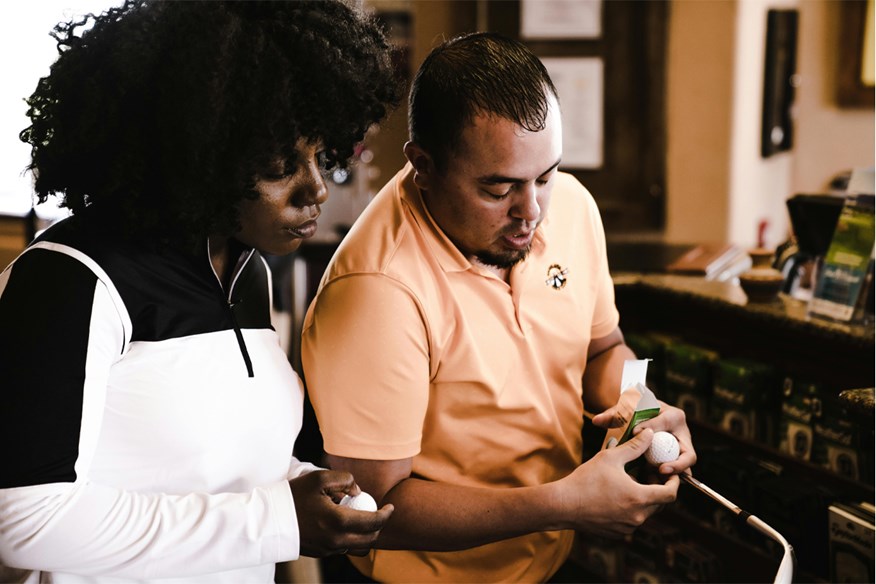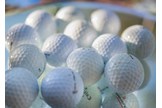Switching to this golf ball can save you $438 per year – but should you?
Last updated:
I’ve worked out how much you could save by switching to direct-to-consumer golf balls and looked at the difference in performance compared to premium big-name balls.
Choosing the best golf ball to use is more complicated now than ever before.
It used to be that only a few manufacturers made genuine top-tier balls, and each brand typically only had one such model in their stable. But these days all the top brands have multiple tour-level models, and there are more companies competing in that sector than ever before. The old firm of Titleist, Callaway, Srixon, and TaylorMade have been joined by countless other ‘direct-to-consumer’ brands like Vice, Snell, Seed, and more. Then you’ve got supermarket balls like the Kirkland Signature V3 promising Pro V1 levels of performance for a third of the cost.
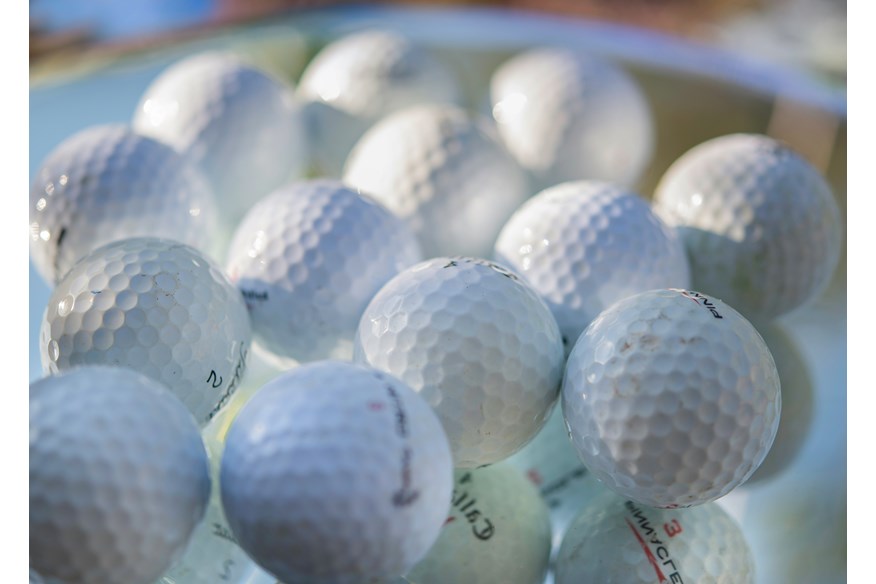
Whilst the breadth of options makes choosing more difficult, there is an upside. The strength of competition means that some brands have been motivated to find ways to offer top-quality golf balls at a far lower price.
- Titleist Pro V1 drops to lowest-ever price in Black Friday sales
- Best Black Friday 2024 Golf Ball Deals
While a dozen Titleist Pro V1 or Pro V1x golf balls, for instance, will cost you $55/£50, there are models promising similar performance for significantly less money.
But is it a case of ‘you get what you pay for’ or can a ball that’s 47% cheaper really compete against the number one ball in golf?
That’s one of the questions we sought to answer in the recent Today’s Golfer Robot Golf Ball Test.
The test measured the performance of the leading premium balls alongside several direct-to-consumer golf balls to see whether you could save money without compromising on performance. The results, which we’ll come to shortly, were fascinating…

What are direct-to-consumer golf balls?
The direct-to-consumer business model involves – you’ve guessed it – selling directly to the consumer. You order online and the product is sent straight to you. It means brands can make huge savings by not having their own retail premises or having to give a cut to golf stores or pro shops. DTC brands also don’t tend to pay big-money endorsement deals to tour pros.
They can pass those sizable savings on to the consumer, which is how they’re able to offer price points far lower than the traditional big-name brands.
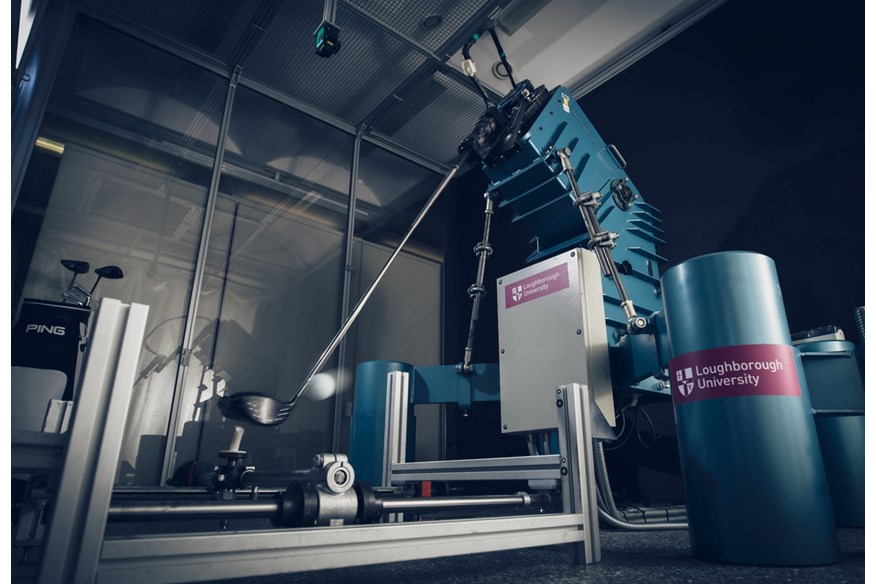
How we tested the golf balls
The recent Today’s Golfer Robot Golf Ball Test used a $100,000 robot to test golf balls across every conceivable metric. Every ball was tested with a driver at three different swing speeds – 85mph, 100mph, and 115mph – and with a 7-iron and pitching wedge.
We know from years of experience that a robot is the only way to guarantee the consistency of strike required to isolate the one variable we are trying to test: the performance of the golf ball. Even the world’s best golfers can’t hit a ball exactly the same way, time after time, which brings in other variables. That’s why every golf manufacturer uses a robot when developing golf balls and it’s why we use a robot to test those golf balls head-to-head.
Thanks to the robot’s adjustability it’s possible to control lie angle, swing path, face angle, attack angle, impact location, hip rotation, and wrist action at swing speeds from 5 – 130 MPH. There simply isn’t a better swinger out there – not even among the world’s best golfers.
When picking the best golf balls, we use human testing – both on a launch monitor and on the course – to measure intangibles like sound and feel, but for pure data, a robot is a must-have.
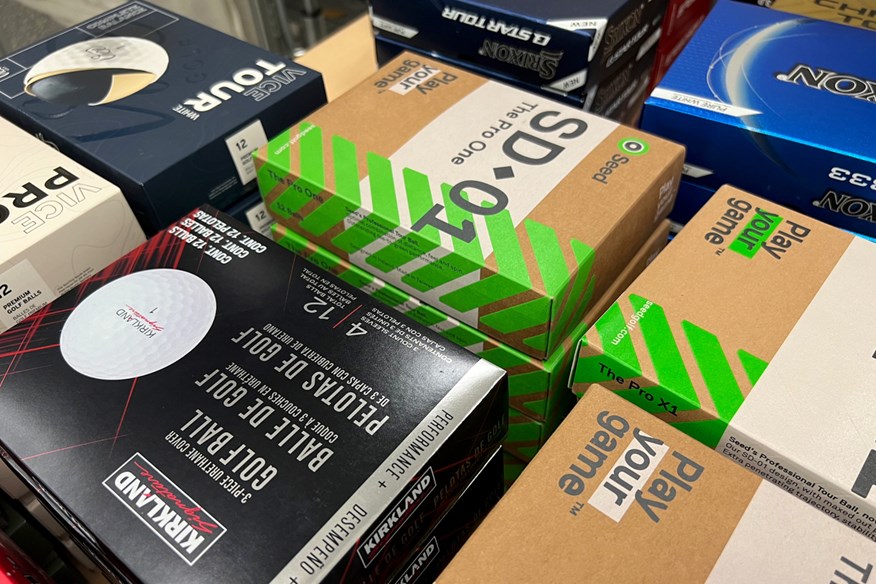
The best direct-to-consumer golf balls
You can peruse all of the Robot Test results here, but a couple of direct-to-consumer golf balls stood out in terms of performance, so it’s those I’ll focus on here.
The Vice Pro and Vice Pro Plus, and the Seed SD 01 and Seed SD 02, were right in the mix across all the key performance areas in the test. Let’s look in detail at how they performed in every area compared to the other balls tested.

85mph driver
The Vice Pro Plus ranked second of all the balls tested for carry distance at the slowest swing speed. its 192.4-yard carry was only 1.2 yards behind the Wilson Staff Model, which was the longest at this speed, and 7.4 yards longer than the Srixon AD333, which was the shortest.
| Ball Speed (MPH) | Launch Angle (DEG) | Backspin (RPM) | Height (YDS) | Descent Angle (DEG) | Carry Distance (YDS) | Shot Area (SQ YDS) | |
| Wilson Staff Model | 124.6 (1) | 13.4 | 2657 | 39 | 29.4 | 193.6 (1) | 21 |
| Vice Pro Plus | 124.2 (T3) | 13.3 | 2670 | 38.7 | 29.1 | 192.4 (2) | 15.9 |
| Callaway Chrome Tour X | 124.2 (T3) | 13 | 2838 (Highest) | 39 | 29.6 | 192.1 (3) | 15.4 |
| Wilson Staff Model X | 124.5 (2) | 12.8 | 2722 | 38.7 | 28.6 | 191.8 | 17.9 |
| Seed SD 02 | 124.2 (T3) | 13.3 | 2615 | 38.5 | 28.7 | 191.8 | 10.8 (3) |
| Seed SD 01 | 123.9 | 13.5 | 2583 | 38.4 | 28.9 | 191.7 | 9.2 (1) |
| Titleist Pro V1 | 123.8 | 13.5 | 2513 | 38 | 28.4 | 191.2 | 13.6 |
| TaylorMade TP5 | 123.9 | 13.3 | 2637 | 38.4 | 28.7 | 191.1 | 14.3 |
| TaylorMade TP5x | 124.1 | 13.3 | 2565 | 38.2 | 28.3 | 190.9 | 17.8 |
| Callaway Chrome Tour | 123.9 | 13.2 | 2633 | 38.3 | 28.6 | 190.8 | 10 (2) |
| Vice Tour | 123.9 | 13.6 | 2428 | 37.8 | 28.1 | 190.3 | 19.4 |
| Titleist Pro V1x | 123.5 | 13.3 | 2646 | 38.2 | 28.5 | 190 | 15.5 |
| Vice Pro | 123.4 | 13.3 | 2548 | 37.8 | 28.2 | 189.4 | 22.4 |
| Snell Prime 3.0 | 123.2 | 13.2 | 2644 | 37.9 | 28.5 | 189.2 | 36.6 (Largest) |
| Vice Pro Air | 123 | 13.7 | 2477 | 37.6 | 28.3 | 189.2 | 30.8 |
| Srixon Q-Star Tour | 123.4 | 13.6 | 2442 | 37.6 | 28 | 189 | 26.6 |
| Callaway Chrome Soft | 123.3 | 13.2 | 2623 | 37.9 | 28.3 | 189 | 29.3 |
| Seed SD X1 | 123.3 | 12.9 | 2707 | 38 | 28.3 | 188.9 | 16.7 |
| Srixon Distance | 123.1 | 13.6 | 2352 | 37.1 | 27.5 | 187.6 | 29.1 |
| Snell Prime 4.0 | 122.9 | 13.3 | 2476 | 37.2 | 27.6 | 187.4 | 30.1 |
| Snell Prime 2.0 | 122.3 | 13.2 | 2671 | 37.4 | 28.3 | 186.9 | 12 |
| Kirkland Signature V3 | 122.3 | 12.9 | 2822 | 37.7 | 28.8 | 186.9 | 12.6 |
| TaylorMade SpeedSoft | 123 | 13.6 | 2236 (Lowest) | 36.5 | 26.7 | 185.7 | 14.8 |
| Srixon AD333 | 122.7 | 13.2 | 2398 | 36.6 | 26.8 | 185 | 30.9 |
| AVERAGE | 123.5 | 13.3 | 2579 | 37.9 | 28.3 | 189.7 | 19.7 |
The Seed SD 02 and SD 01 ranked fifth and sixth respectively for carry distance at this swing speed, while the Vice Pro was right in line with the test average.
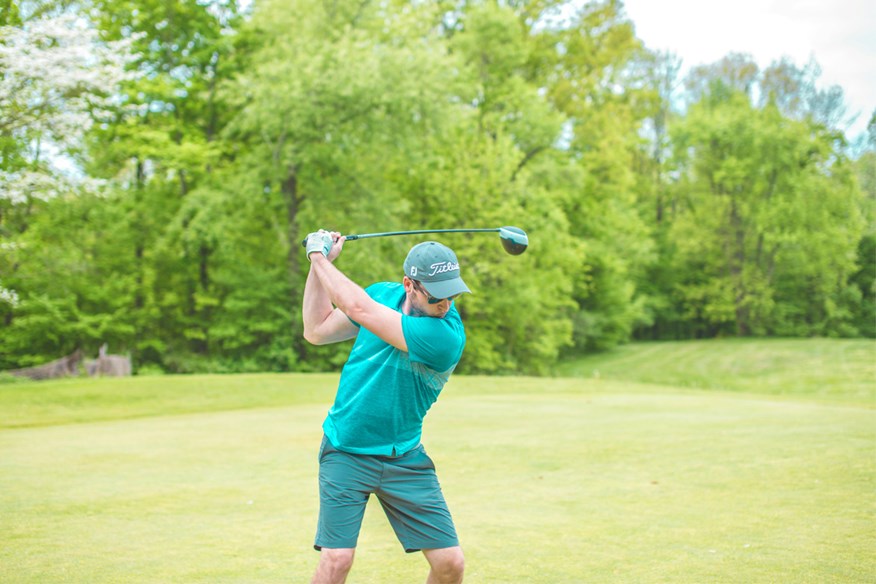
100mph driver
All four models were above average for carry distance at this swing speed and very closely bunched, with less than a yard between them. They were a couple of yards behind the Callaway Chrome Tour X, which was the longest golf ball at this speed.
| Ball Speed (MPH) | Launch Angle (DEG) | Backspin (RPM) | Height (YDS) | Descent Angle (DEG) | Carry Distance (YDS) | Shot Area (SQ YDS) | |
| Wilson Staff Model X | 145.7 (1) | 13.1 | 2652 | 51.3 | 34.5 | 245.4 (1) | 33.3 |
| Callaway Chrome Tour X | 145.4 (2) | 13 | 2832 (Highest) | 51.7 | 35.6 | 245.1 (2) | 31.3 |
| Callaway Chrome Tour | 145.1 (T3) | 13.6 | 2567 | 50.9 | 34.6 | 244.8 (3) | 41.3 |
| TaylorMade TP5 | 144.9 | 13.3 | 2703 | 51.1 | 35.1 | 244.3 | 17.9 (1) |
| Wilson Staff Model | 144.8 | 13.6 | 2585 | 50.8 | 34.6 | 244.3 | 20.3 |
| TaylorMade TP5x | 145.1 (T3) | 13.5 | 2506 | 50.6 | 34 | 244 | 27.4 |
| Vice Pro Plus | 144.3 | 13.5 | 2608 | 50.5 | 34.4 | 242.8 | 30.7 |
| Seed SD 02 | 144.3 | 13.6 | 2536 | 50.3 | 34.1 | 242.7 | 44.1 |
| Vice Pro | 144.3 | 13.6 | 2501 | 50.3 | 33.9 | 242.5 | 29.7 |
| Seed SD 01 | 143.8 | 13.6 | 2597 | 50.3 | 34.4 | 241.9 | 24.4 |
| Snell Prime 4.0 | 144 | 13.7 | 2473 | 50 | 33.8 | 241.8 | 18.9 (3) |
| Seed SD X1 | 144.1 | 13.1 | 2675 | 50.5 | 34.1 | 241.7 | 18.1 (2) |
| Vice Tour | 144.1 | 13.7 | 2365 | 49.6 | 33 | 241.1 | 56.9 |
| Titleist Pro V1x | 145.1 (T3) | 12.4 | 2539 | 50 | 32.1 | 240.6 | 23.7 |
| Snell Prime 3.0 | 143.4 | 13.8 | 2462 | 49.6 | 33.7 | 240.4 | 59.2 |
| Callaway Chrome Soft | 143.7 | 13.3 | 2514 | 49.8 | 33.4 | 240.3 | 31 |
| Titleist Pro V1 | 144.8 | 12.4 | 2519 | 49.8 | 31.9 | 239.8 | 26.7 |
| Vice Pro Air | 142.8 | 13.7 | 2530 | 49.5 | 34 | 239.3 | 29.8 |
| Kirkland Signature V3 | 142.7 | 13.2 | 2806 | 50 | 34.9 | 238.9 | 34.6 |
| Srixon Q-Star Tour | 142.9 | 13.6 | 2457 | 49.2 | 33.3 | 238.7 | 60.3 |
| Snell Prime 2.0 | 141.9 | 13.5 | 2638 | 49.3 | 34.2 | 237.5 | 30.8 |
| Srixon Distance | 143.7 | 12.7 | 2383 | 48.8 | 31.3 | 236.8 | 28.5 |
| Srixon AD333 | 142.6 | 13 | 2400 | 48.3 | 31.6 | 235 | 81.3 (Largest) |
| TaylorMade SpeedSoft | 142.1 | 13.6 | 2267 (Lowest) | 47.9 | 31.6 | 234.8 | 31.9 |
| AVERAGE | 144 | 13.3 | 2546 | 50 | 33.7 | 241 | 34.7 |
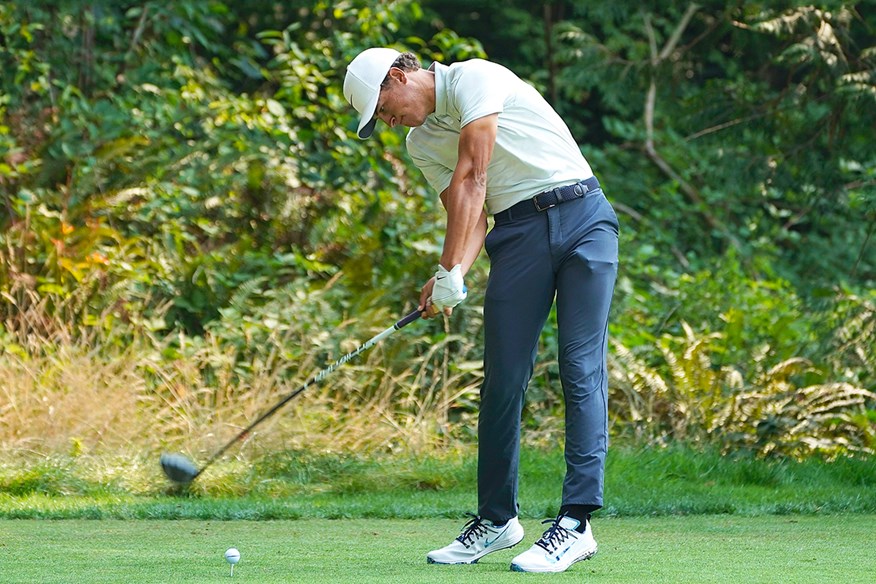
115mph driver
All four models again delivered above-average carry distance at this swing speed.
| Ball Speed (MPH) | Launch Angle (DEG) | Backspin (RPM) | Height (YDS) | Descent Angle (DEG) | Carry Distance (YDS) | Shot Area (SQ YDS) | |
| Callaway Chrome Tour X | 166.6 | 11.6 | 2155 | 59.7 (Highest) | 32.8 | 283.2 (1) | 31.2 (3) |
| Wilson Staff Model | 167.1 (2) | 11.4 | 2079 | 59.3 | 31.9 | 282 (2) | 50.5 |
| Wilson Staff Model X | 167.2 (1) | 11.3 | 2084 | 59.3 | 31.7 | 281.7 (3) | 38.6 |
| Callaway Chrome Tour | 166.5 | 11.3 | 2140 | 59.2 | 31.9 | 281 | 54.2 |
| Seed SD 02 | 165.8 | 11.4 | 2137 | 59 | 32.1 | 280.4 | 60.3 |
| Vice Pro Plus | 166.3 | 11.5 | 2064 | 58.8 | 31.7 | 280.3 | 35.4 |
| TaylorMade TP5x | 167 (3) | 11.1 | 2073 | 59 | 31.2 | 280.2 | 33.1 |
| Vice Pro | 165.8 | 11.4 | 2103 | 58.7 | 31.8 | 279.5 | 40 |
| Seed SD 01 | 165.4 | 11.5 | 2125 | 58.8 | 32.1 | 279.5 | 30 (2) |
| Vice Tour | 165.5 | 11.5 | 2072 | 58.4 | 31.8 | 278.9 | 52.4 |
| TaylorMade TP5 | 164.8 | 11.7 | 2080 | 58.3 | 32.1 | 278.3 | 86 |
| Titleist Pro V1 | 165.9 | 11.2 | 2066 | 58.3 | 31.1 | 278.1 | 29.5 (1) |
| Titleist Pro V1x | 166.7 | 11.1 | 2048 | 58.3 | 30.1 | 277.9 | 74.6 |
| Snell Prime 4.0 | 165.3 | 11.3 | 2111 | 58.3 | 31.4 | 277.8 | 63.4 |
| Snell Prime 3.0 | 165.4 | 11.5 | 2024 | 58.1 | 31.3 | 277.5 | 111.3 |
| Seed SD X1 | 164.7 | 11.3 | 2124 | 58.1 | 31.5 | 277 | 41.1 |
| Kirkland Signature V3 | 164.8 | 10.5 | 2296 (Highest) | 58.6 | 31.3 | 276.6 | 45.1 |
| Callaway Chrome Soft | 163.9 | 11.8 | 2079 | 57.7 | 31.9 | 276 | 174.8 (Largest) |
| Snell Prime 2.0 | 163.5 | 11.3 | 2226 | 58 | 32 | 275.7 | 130.5 |
| Vice Pro Air | 163.6 | 11.6 | 2082 | 57.5 | 31.6 | 275.2 | 60.3 |
| Srixon Q-Star Tour | 163.6 | 11.7 | 2077 | 57.5 | 31.6 | 275.1 | 69.4 |
| Srixon Distance | 164.7 | 11.4 | 2000 | 57.3 | 30.7 | 274.8 | 64.5 |
| Srixon AD333 | 162.7 | 11.4 | 2047 | 56.5 | 30.6 | 270.9 | 85.1 |
| TaylorMade SpeedSoft | 161.7 | 11.7 | 1984 (Lowest) | 55.8 | 30.5 | 269.1 | 33.3 |
| AVERAGE | 165.2 | 11.4 | 2095 | 58.3 | 31.5 | 277.8 | 62.3 |
The Seed SD 02 ranked fifth of all models tested, closely followed by the Vice Pro Plus, Vice Pro, and Seed SD 01.
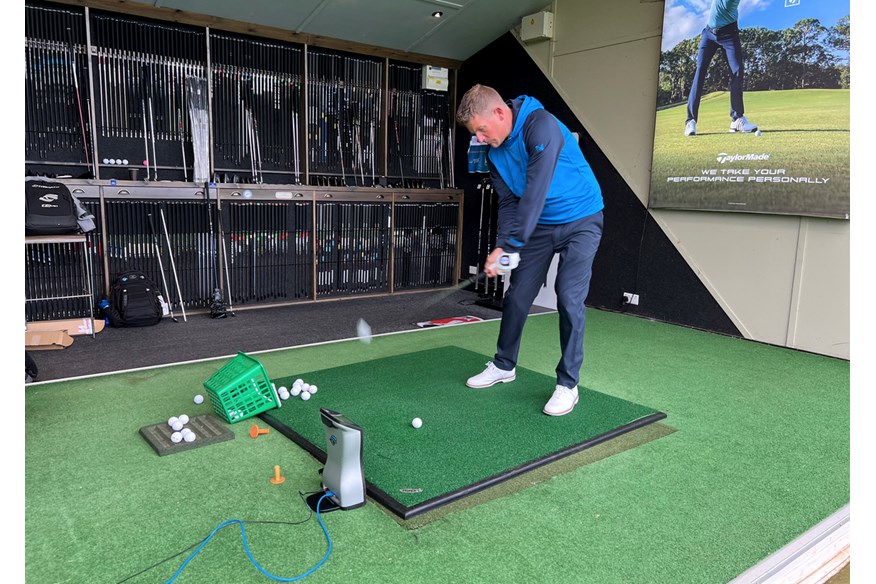
7 iron
All four balls ranked in the top third for 7-iron carry distance and generated descent angles that matched or bettered the test average.
| Ball Speed (MPH) | Launch Angle (DEG) | Backspin (RPM) | Height (YDS) | Descent Angle (DEG) | Carry Distance (YDS) | Shot Area (SQ YDS) | |
| Srixon Q-Star Tour | 108.1 | 21.3 | 4985 | 32 | 44.8 | 156.5 (T1) | 7.2 (1) |
| Vice Pro Air | 107.6 | 21.5 | 4788 (Lowest) | 31.8 | 44.6 | 156.5 (T1) | 15.1 |
| Wilson Staff Model | 108.7 (1) | 21.1 | 5256 | 32.1 | 45.2 | 156.4 (3) | 13.3 |
| Vice Tour | 107.9 | 21.4 | 4967 | 31.9 | 44.9 | 156.3 | 17.2 |
| Seed SD 01 | 108.5 (2) | 21 | 5314 | 31.9 | 45.1 | 155.8 | 9.5 |
| Seed SD 02 | 108.2 (T3) | 21.1 | 5188 | 31.9 | 45 | 155.8 | 37.1 |
| Vice Pro | 107.7 | 21.1 | 5103 | 31.7 | 44.7 | 155.2 | 8.4 |
| Vice Pro Plus | 108.2 (T3) | 21 | 5379 | 31.7 | 45.1 | 154.9 | 9.9 |
| Snell Prime 4.0 | 107.2 | 21.1 | 4973 | 31.6 | 44.3 | 154.8 | 10.5 |
| TaylorMade TP5x | 108 | 20.7 | 5468 | 31.6 | 44.8 | 154.2 | 13.4 |
| Callaway Chrome Soft | 107.2 | 21.2 | 5173 | 31.4 | 44.7 | 154.1 | 18.5 |
| TaylorMade SpeedSoft | 107.2 | 21.2 | 5185 | 31.5 | 44.7 | 154.1 | 41.4 (Largest) |
| Callaway Chrome Tour | 107.7 | 20.8 | 5384 | 31.5 | 44.7 | 154 | 10 |
| Snell Prime 3.0 | 106.9 | 21 | 5145 | 31.3 | 44.4 | 153.5 | 24.6 |
| Srixon Distance | 107 | 21 | 5306 | 31.3 | 44.6 | 153.1 | 38.7 |
| Srixon AD333 | 106.9 | 21.1 | 5276 | 31.3 | 44.7 | 153.1 | 29 |
| TaylorMade TP5 | 107.7 | 20.7 | 5672 | 31.4 | 45 | 152.9 | 16.6 |
| Titleist Pro V1 | 107.5 | 20.7 | 5594 | 31.2 | 44.8 | 152 | 8.2 (3) |
| Wilson Staff Model X | 108.1 | 20.3 | 6084 | 31.3 | 45.2 | 151.8 | 7.8 (2) |
| Snell Prime 2.0 | 106.5 | 20.7 | 5461 | 31 | 44.4 | 151.4 | 8.7 |
| Seed SD X1 | 107.1 | 20.4 | 5771 | 31.1 | 44.7 | 151.3 | 15.8 |
| Titleist Pro V1x | 107.1 | 20.4 | 5835 | 31 | 44.7 | 151 | 8.3 |
| Callaway Chrome Tour X | 107.6 | 20.1 | 6193 (Highest) | 31 | 44.9 | 150.5 | 16.2 |
| Kirkland Signature V3 | 106 | 19.7 | 6109 | 30.4 | 43.9 | 147.8 | 17.2 |
| AVERAGE | 107.5 | 20.9 | 5400 | 31.4 | 44.7 | 153.6 | 16.8 |
Descent angle is the key metric that determines how fast your ball stops when it lands on the green.

Pitching wedge
All four models delivered above-average carry distance and descent angles. Spin rates were a little below average, but that was mitigated by higher-than-average launch angles, which created a steep angle of descent to ensure shots stopped quickly upon landing.
| Ball Speed (MPH) | Launch Angle (DEG) | Backspin (RPM) | Descent Angle (DEG) | Carry Distance (YDS) | L – R Dispersion (YDS) | Shot Area (SQ YDS) | |
| Callaway Chrome Tour X | 84.8 | 28.1 | 8080 (1) | 47.5 | 104.9 | 1.3 | 2 (1) |
| Titleist Pro V1x | 84.3 | 27.9 | 8046 (2) | 47.2 | 104.3 | 2 | 4.7 |
| Kirkland Signature V3 | 83.8 | 27.7 | 8043 (3) | 46.8 | 103.4 | 1.8 | 4.1 |
| Wilson Staff Model X | 85.1 | 28.5 | 7982 | 47.9 | 105.4 | 1.9 | 3 (T2) |
| Vice Tour | 84.7 | 28.4 | 7926 | 47.7 | 104.9 | 1.6 | 3.1 |
| Seed SD X1 | 84.6 | 28.7 | 7692 | 47.8 | 105.2 | 1.6 | 4.6 |
| Titleist Pro V1 | 84 | 28.7 | 7691 | 47.6 | 104 | 2.6 | 10.1 |
| Srixon Distance | 83.6 | 28.7 | 7636 | 47.5 | 103.6 | 3.9 | 11.7 |
| TaylorMade TP5 | 84.9 | 29 | 7617 | 48.3 | 105.7 | 1.8 | 6 |
| Snell Prime 2.0 | 84 | 28.3 | 7617 | 47.3 | 104.3 | 2.6 | 12 (Largest) |
| TaylorMade TP5x | 84.9 | 28.9 | 7606 | 48.1 | 105.7 | 3 | 8.1 |
| Callaway Chrome Tour | 84.9 | 28.8 | 7481 | 47.9 | 106 | 1.8 | 6.4 |
| TaylorMade Speedsoft | 84.2 | 29.2 | 7420 | 48.1 | 104.8 | 1.9 | 6 |
| Wilson Staff Model | 84.8 | 29.4 | 7329 | 48.4 | 105.8 | 1.7 | 3.7 |
| Srixon AD333 | 84 | 29.3 | 7309 | 48 | 104.5 | 2.8 | 10.5 |
| Seed SD 01 | 85 | 29.4 | 7275 | 48.5 | 106.3 | 2.1 | 4.2 |
| Vice Pro Plus | 84.7 | 29.4 | 7258 | 48.3 | 105.8 | 2.2 | 5 |
| Seed SD 02 | 84.8 | 29.5 | 7175 | 48.4 | 106.1 | 3.9 | 8.2 |
| Vice Pro | 84.7 | 29.3 | 7159 | 48.3 | 106.1 | 2.6 | 4.7 |
| Callaway Chrome Soft | 84.6 | 29.6 | 7040 | 48.4 | 106.1 | 1.9 | 3.5 |
| Snell Prime 3.0 | 83.9 | 29.4 | 6947 | 48 | 105.1 | 3 | 11.7 |
| Srixon Q-Star Tour | 84.7 | 30 | 6810 | 48.7 | 106.5 | 1.1 | 3 (T2) |
| Snell Prime 4.0 | 84.1 | 29.8 | 6685 | 48.3 | 105.9 | 2.4 | 7.9 |
| Vice Pro Air | 84 | 30.2 | 6614 | 48.7 | 106.4 | 1.6 | 3.1 |
| AVERAGE | 84.5 | 29 | 7435 | 48 | 105.3 | 2.2 | 6.1 |
How much could you save?
A dozen Titleist Pro V1 or Pro V1x retails for $55/£50, which works out at $4.58/£4.17 per ball.
The price of the Vice and Seed balls varies depending on how many boxes you buy at once, but can be as little as $32.99/£29.99 for the Vice and $29/£25 for the Seed. That makes the Vice $2.75/£2.50 per ball and the Seed just $2.42/£2.08 per ball.
Switching from the Titleist Pro V1 or any similarly-priced premium golf ball to the Seed could therefore save you $2.16/£2.09 per ball, while a switch to Vice would save you $1.83/1.67 per ball. That might not sound like much, but it can really add up over the course of a year.

Research shows that club golfers lose 1.3 balls per round, on average. You’ll know if you tend to get through more than that. I’m a 3-handicapper and I’d say the 1.3 average seems about right, plus I’ll occasionally have to retire a golf ball that’s become too scuffed from overuse or, more likely, having been knifed out of a bunker.
If you play once a week and lose 1.3 balls per round, you would save $146.02 across the course of a year by switching to the Seed ball.
If you play three times a week and lose 1.3 balls per round, you’d save $438.05/£423.85 per year by making the switch.
Plenty of golfers lose multiple balls each time they play. If you play three times a week and lose 3 balls per round, you’d save a whopping $1,010.88/£978.12 each year.
Choosing the Vice instead of the Seed would deliver slightly smaller but still significant savings.
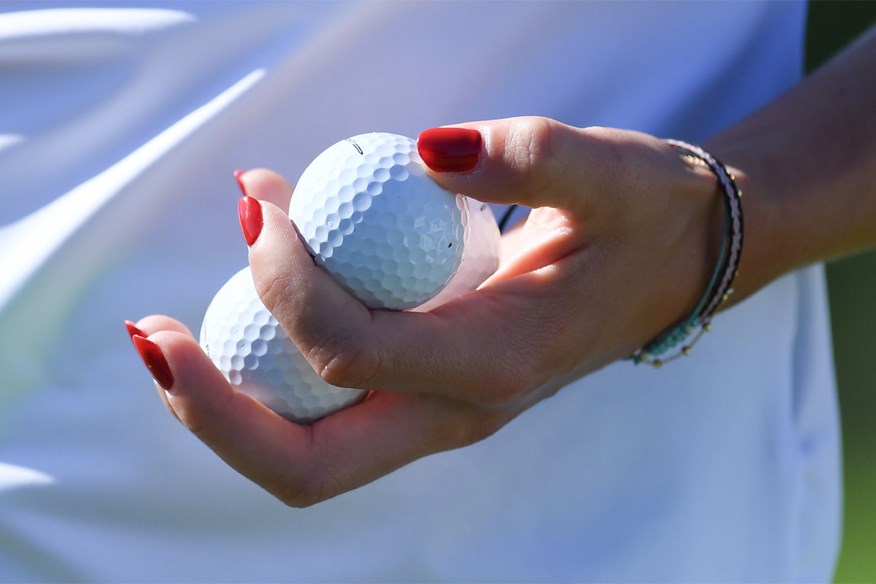
Should you switch to a direct-to-consumer golf ball?
The short answer is… it depends. If you want the absolute best performance possible, the data would suggest you look at the Callaway Chrome Tour X or perhaps the TaylorMade TP5x.
But the Seed and Vice balls aren’t far behind those premium balls in terms of performance and come in at significantly lower price points. If budget is no issue, by all means go for the top-price balls and eke out every possible ounce of performance. But it’s hard to say no to the Seed and Vice when you can make a significant saving and play balls that are such a close match. Especially when you could potentially invest the money saved in other parts of your golf equipment and see bigger gains than you’d get from a more expensive golf ball.
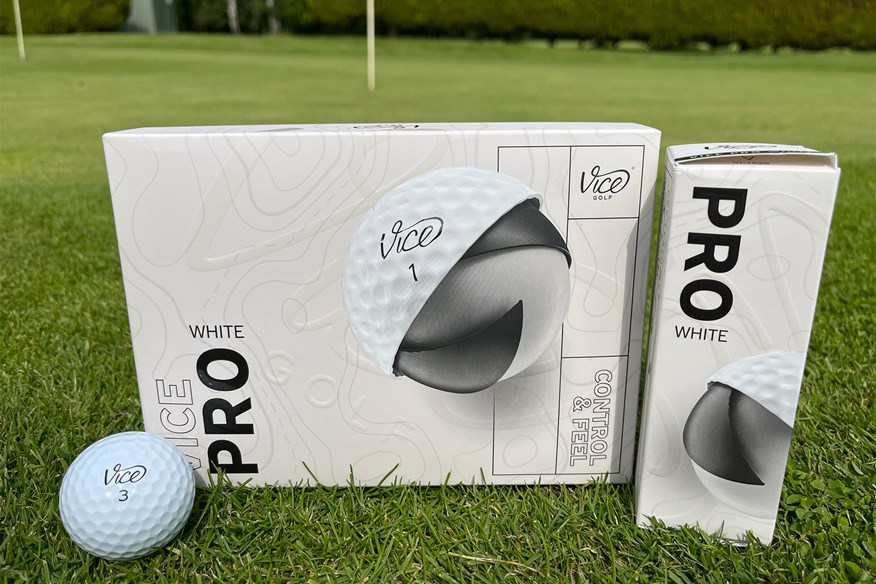

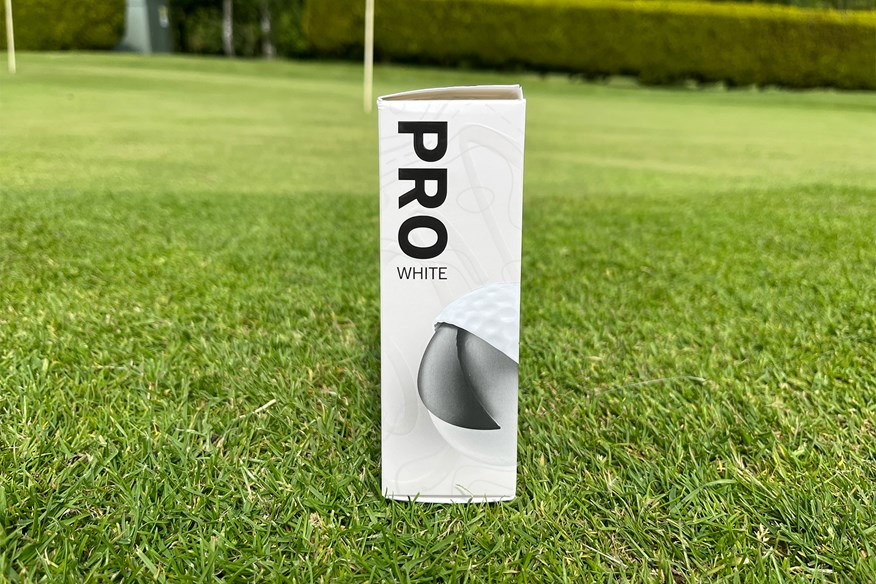
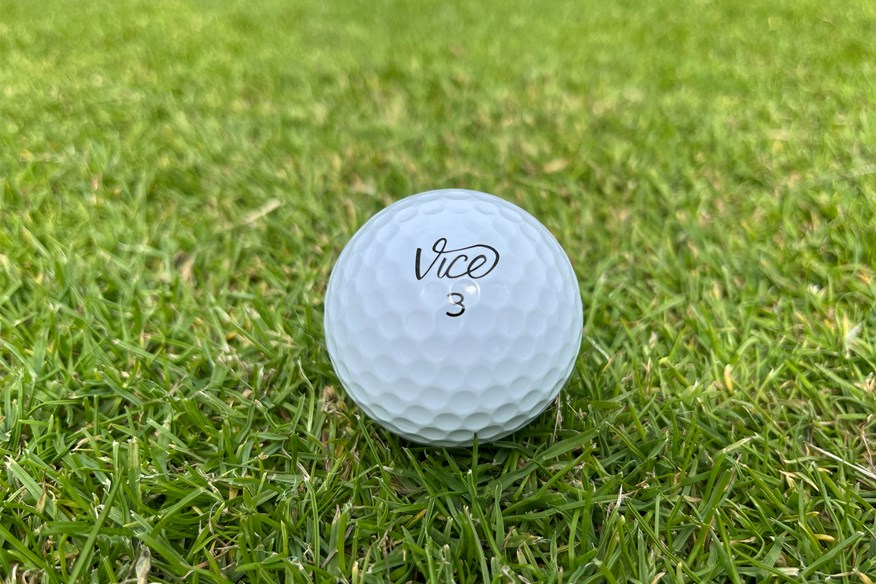
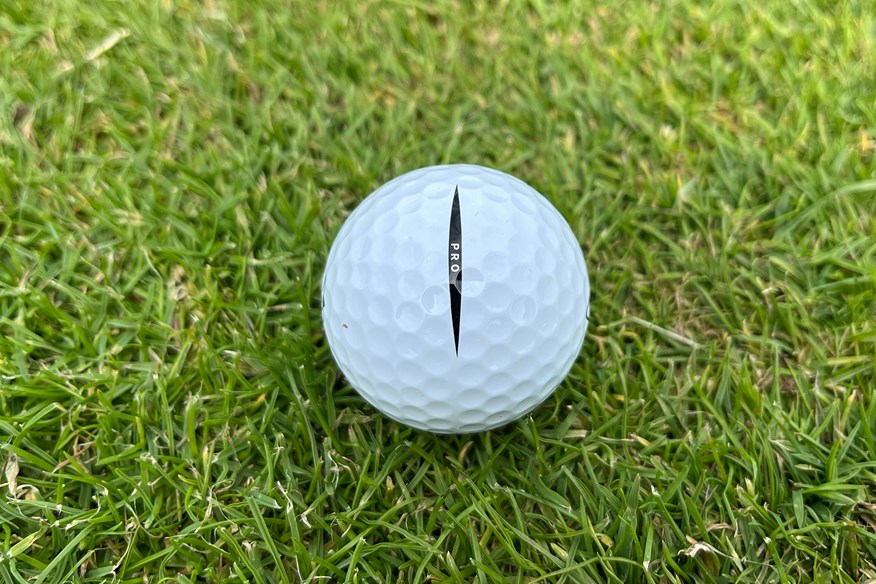
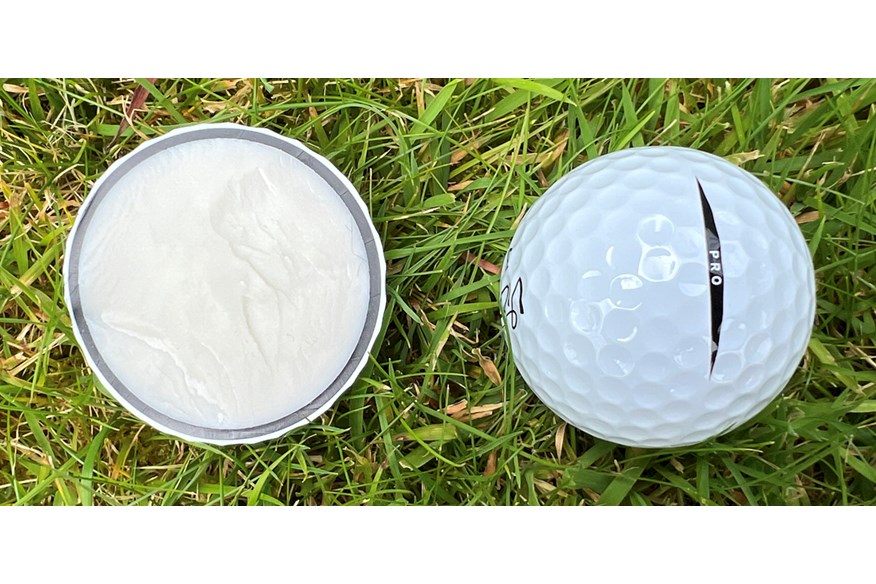
Pros
- The most consistent golf ball in our 2024 robot test
- Great value for money compared to other premium golf balls
- Competitive distance at varying swing speeds
Cons
- Not as good as the Vice Pro Plus
- Limited feedback from every shot
| Construction | 3-piece |
| Cover | Urethane |
| Dimples | 318 |
| Feel | Medium |
| Flight | Mid |
| Long game spin | Mid-low |
| Short game spin | Mid |
| Color options | White; Lime |
| Alternative models | Pro Drip; Pro Shade |
- Ultra thin cast urethane cover
- Surlyn grade mantle
- Size-optimized High Energy Speed Core (HESC)
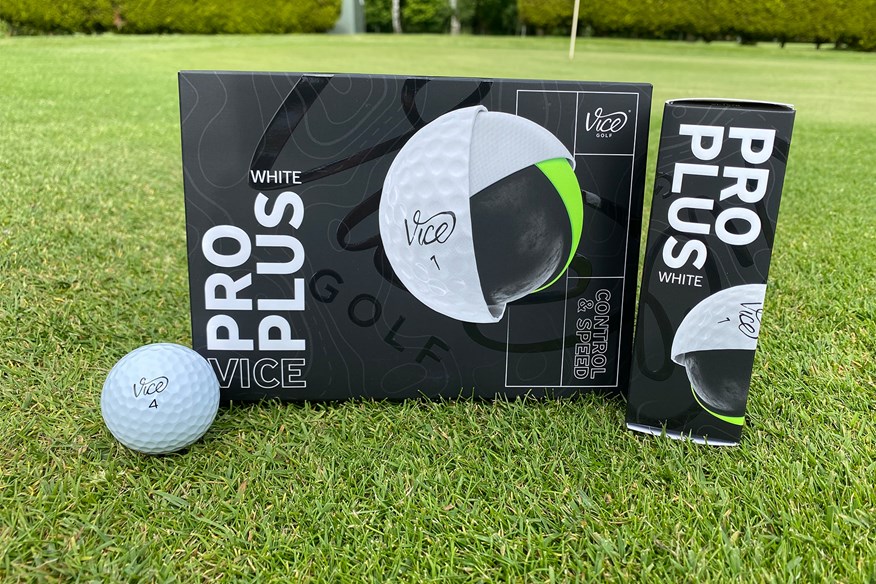

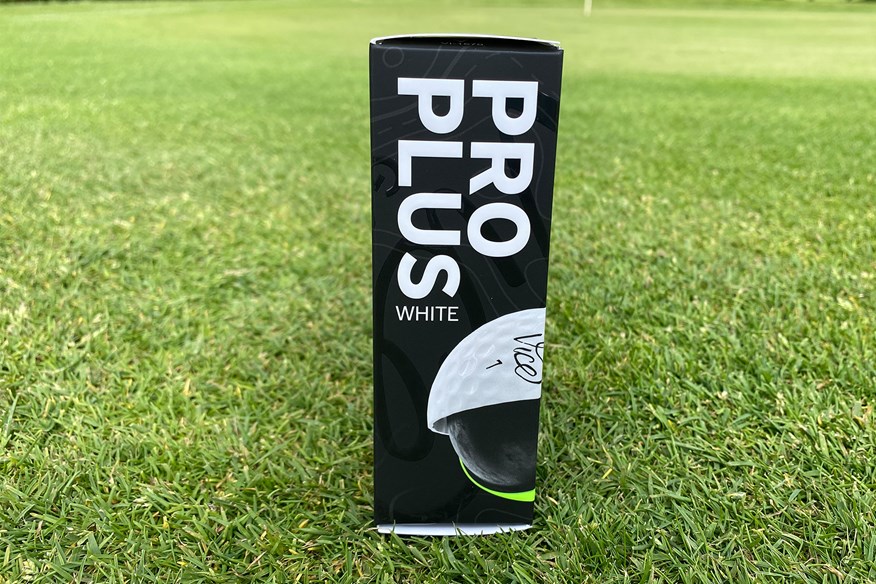
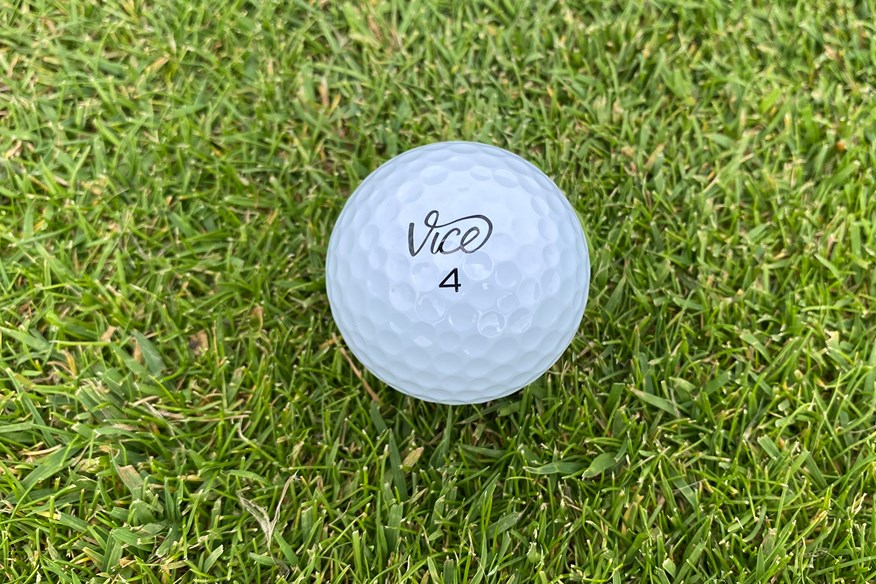
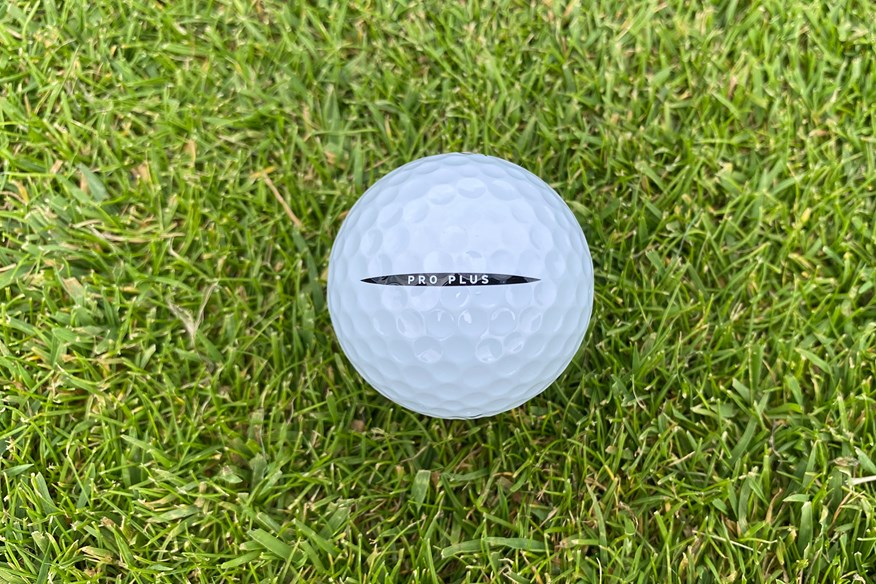
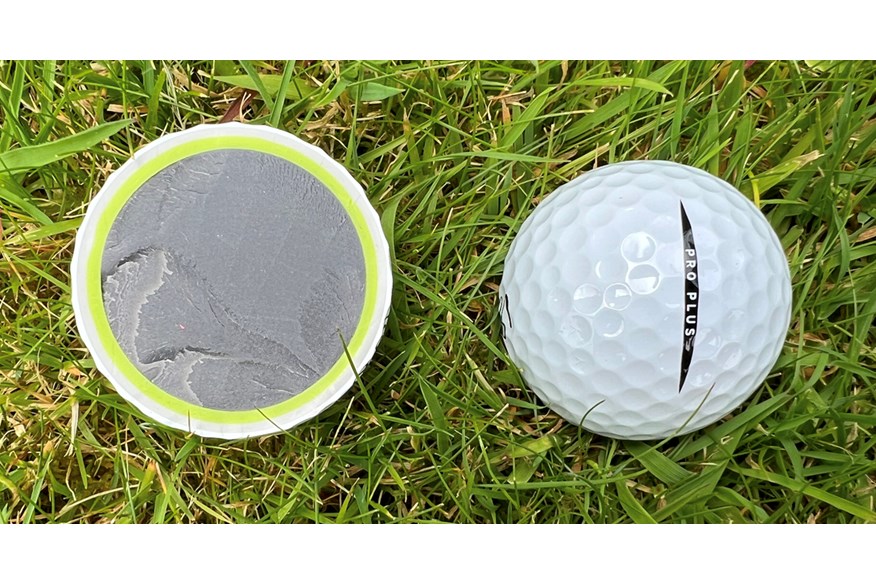
Pros
- A very consistent golf ball
- Solid performance from tee to green
- Brilliant value for a premium product
- A versatile model that works for ranging swing speeds
Cons
- A slightly muted feeling and limited feedback
| Construction | 4-piece |
| Cover | Urethane |
| Dimples | 336 |
| Feel | Firm |
| Flight | Mid-high |
| Long game spin | Mid-low |
| Short game spin | Mid-high |
| Color options | White; Lime |
| Alternative models | Pro Plus Drip; Pro Plus Shade |
- Ultra thin cast urethane cover
- Versatile magnesium ionomer outer mantle
- Surlyn grade inner mantle
- Lightweight speed core
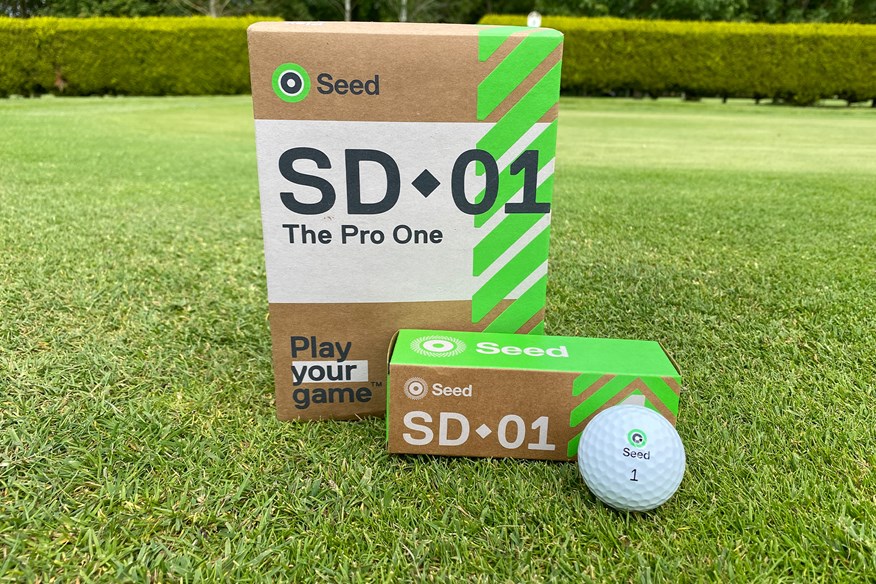

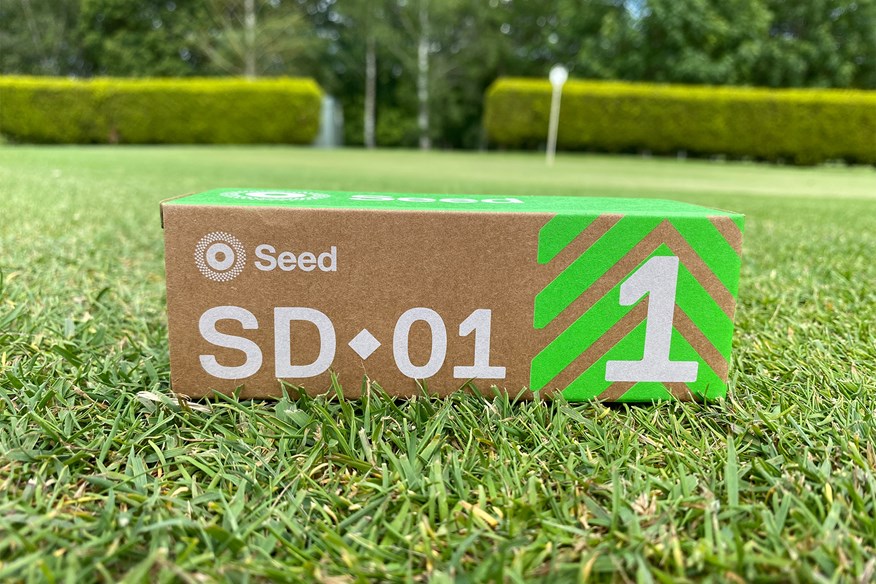
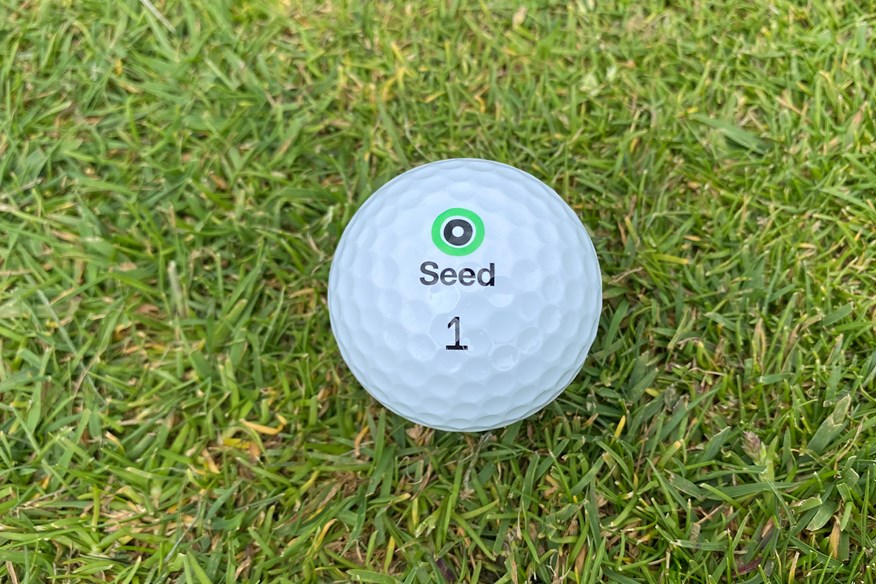
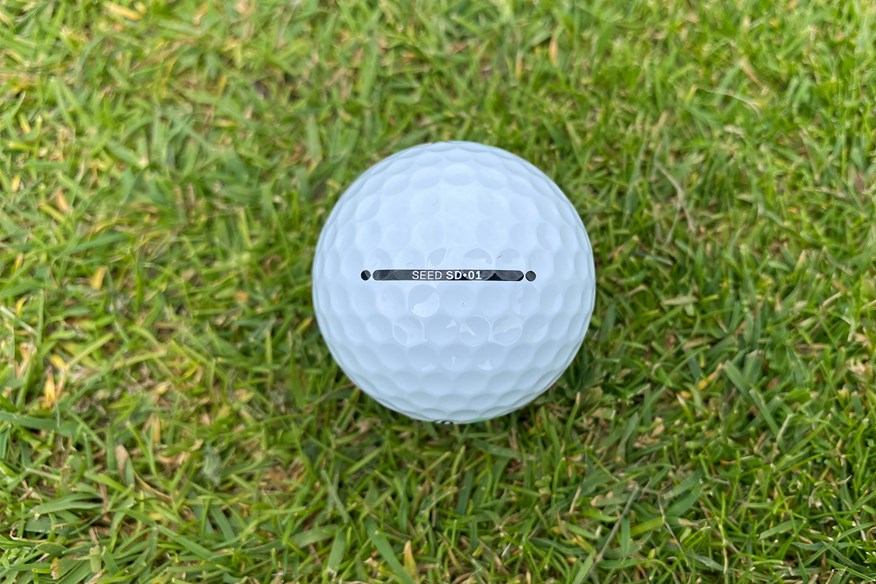
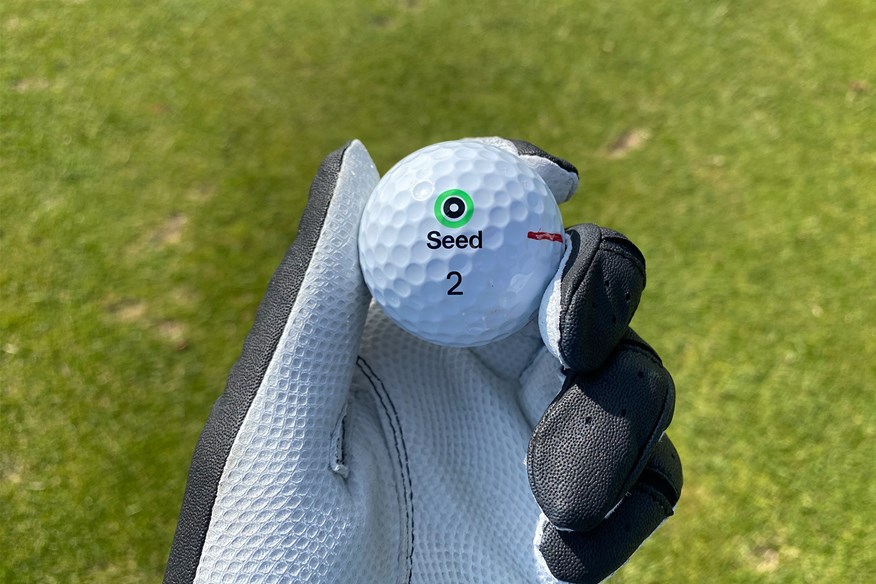
Pros
- Fantastic tee to green performance
- Highly durable (easily gets through a full round)
- Solid response and pleasant feel
- Outstanding value for money
- Works well for a wide range of golfers
Cons
- Not sold in as many places as the game's best-sellers
| Construction | 3-Piece |
| Cover | Urethane |
| Dimples | 336 |
| Feel | Soft |
| Flight | Mid-high |
| Long game spin | Low |
| Short game spin | Mid-high |
| Color Options | White; Yellow; Orange |
- SpeedSpeed core
- Ultra-thin urethane cover
- Responsive mantle layer
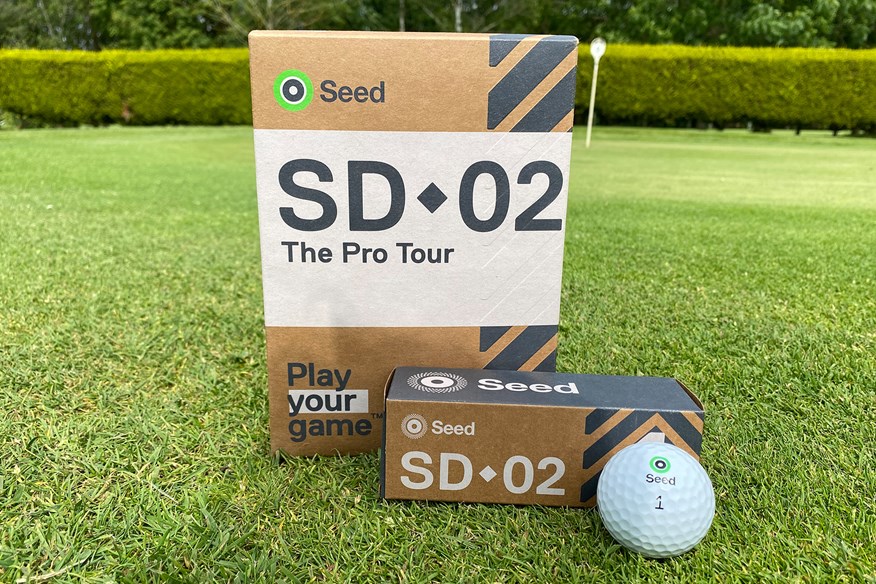

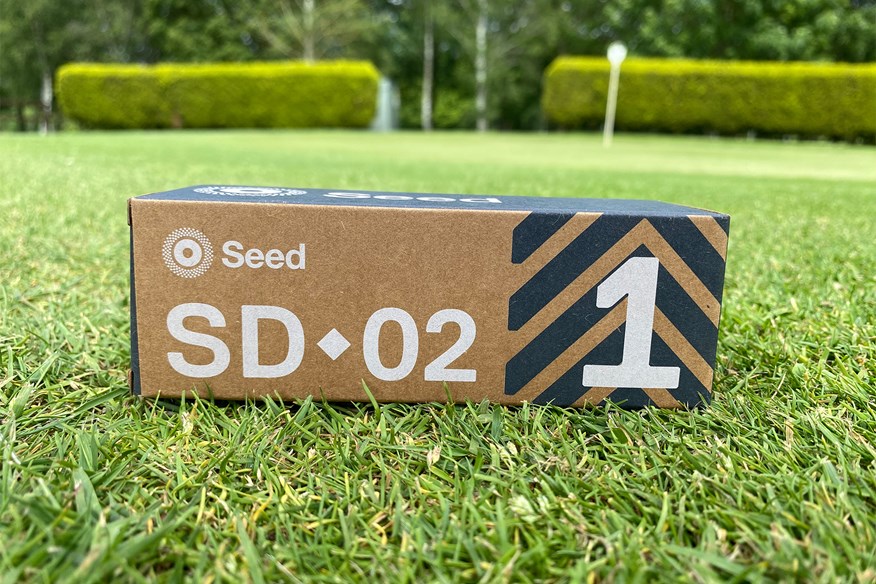
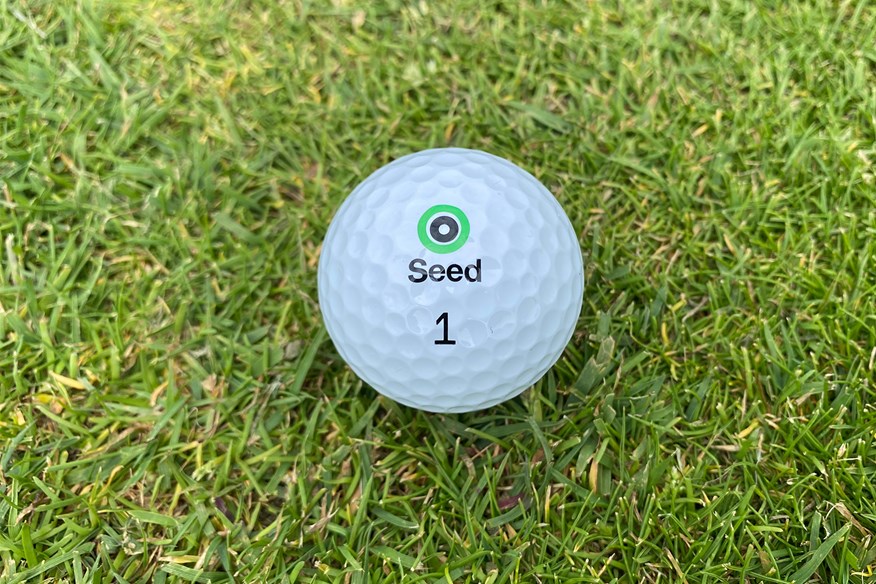
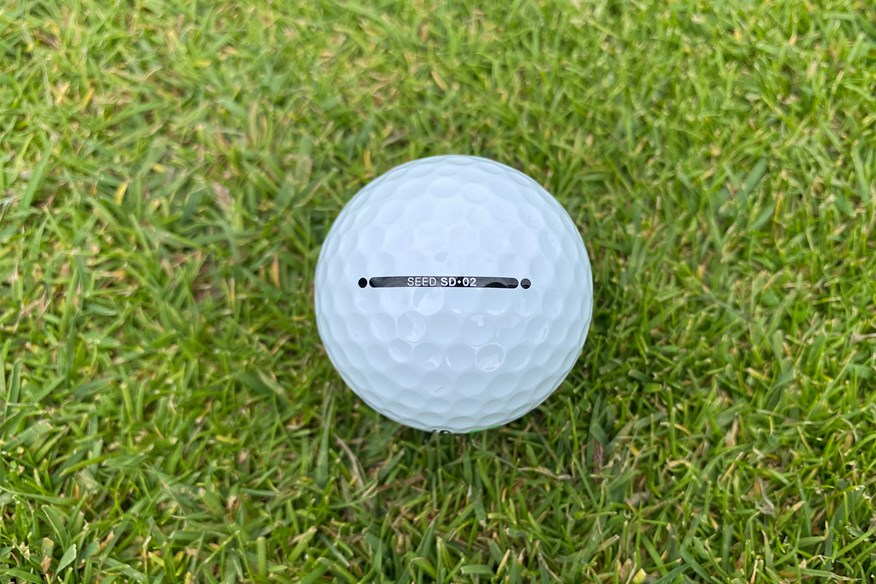
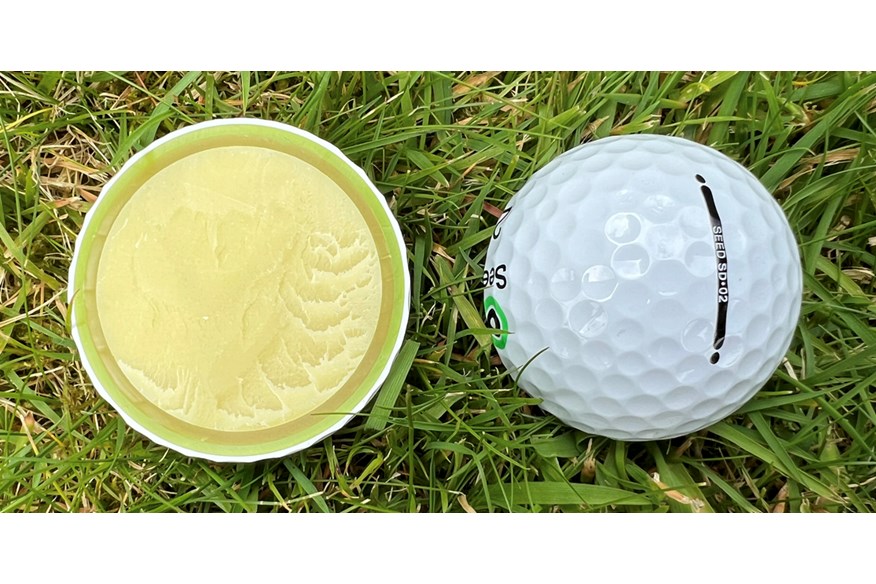
Pros
- Amazing versatile golf ball that works for a wide range of golfers
- Good distance off the tee
- Consistent ball flight
- Incredible value for money
- Durable and responsive urethane cover
Cons
- A lower ball flight compared to other X-model golf balls
| Construction | 4-piece |
| Cover | Urethane |
| Dimples | 336 |
| Feel | Medium |
| Flight | Mid |
| Long game spin | Low |
| Short game spin | Mid-high |
| Color options | White |
- High energy rubber core
- Ultra thin DuPont Surlyn mantle
- DuPont HPF inner cover
- Soft cast urethane cover
The downside
To get the lowest prices, you have to buy these direct-to-consumer balls in bulk. If you’re never tried them before, committing to five dozen is a big step. It might be wise to buy one box and check you like them before buying in bulk. Yes, you’ll pay a little bit more for that first box, but still less than a Titleist Pro V1 or similar, and it’s better than getting a great deal on 60 golf balls and then deciding they’re not for you.
